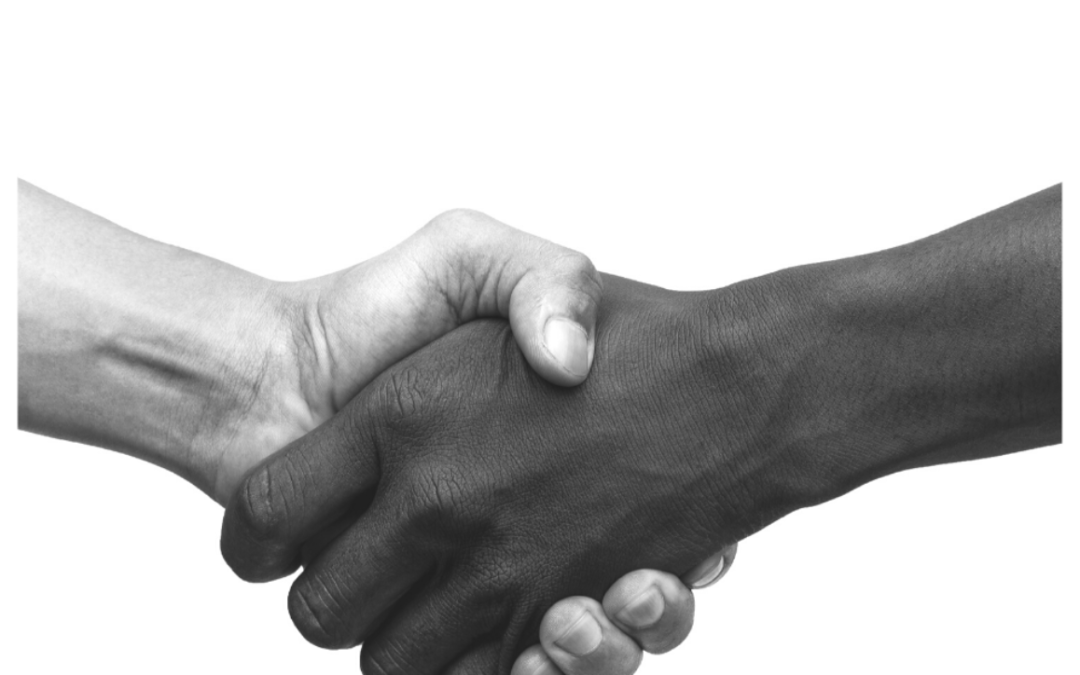
by Kate Evert | Oct 19, 2021 | Competencies, Diversity, Equity, Inclusion, Human Capital, Inspiration, Leadership
Yesterday one of the most noteworthy leaders of our time died. After speaking to a friend who had known Secretary Powell, I grabbed his 1996 autobiography, My American Journey, and started re-reading sections.
I had first read it when it came out. Like many Americans, I was curious to understand what experiences had formed this man that most of us knew from the TV briefings he gave as Chairman of the Joint Chiefs of Staff, when he communicated with ease and subtle authority.
Twenty-five years ago, all of us were lacking the vocabulary that we have today regarding Diversity, Equity, and Inclusion, let alone the insights. At best, organizations thought it was a good thing, and something that they “should” do. But overall, I think there was a sense that it would cost extra, and where was the ROI?
What struck me about Powell’s autobiography then, and again last night, was that he benefitted from a unique upbringing that alone prepared him for his future. Very few of his generation (or today’s) were exposed to such a diverse neighborhood, let alone born into it. He was a child of immigrants, which immediately gives most people a comfort in two cultures, if not two languages. His parents ended up backing two different political parties, which makes you grow up listening to different points of view. Many know the story of how Colin Powell picked up Yiddish working for a Jewish family. But this young man who was raised a very High Church Episcopalian, and served as an acolyte, was also comfortable in a synagogue, earning pocket money by turning off the lights when services were over on Friday night.
I have been asked when I first felt a sense of racial identity, when I first understood that I belonged to a minority. In those early years, I had no such sense, because on Banana Kelly there was no majority. Everybody was either a Jew, an Italian, a Pole, a Greek, a Puerto Rican, or as we said in those days, a Negro.
Several years ago, I heard a CEO discussing the importance of diversity on college campuses. He wasn’t making the pitch for the good of the potential scholarship students who might come from more diverse backgrounds, he was making the business case for the more affluent students who had not been exposed to much, if any, diversity growing up. He asked the room how these students were going to compete in Corporate America if they didn’t know people different from themselves? If they couldn’t relate and communicate with people who had different life experiences?
Especially today, as the working world is struggling to return to some sense of normalcy, the key leadership quality is empathy. Empathy can only come when you have shared someone’s experiences. The more experiences you have with those different from yourself, the more likely it is that you can empathize with a greater number of people, and thereby lead a greater number of people.

by CHRC | Mar 23, 2021 | DEI, Diversity, Equity, Inclusion, Leadership, Women's History Month
There is March Madness, and then there are some things to get mad about in March.
Mad as in frustrated.
Texas and Indiana are miles apart—as were the facilities (and the swag bags!) provided by the NCAA to those college athletes competing in their national basketball championship.
Title IX was enacted in 1972. It stated that “[n]o person in the United States shall, on the basis of sex, be excluded from participation in, be denied the benefits of, or be subjected to discrimination under any education program or activity receiving Federal financial assistance.”
Seems a decent weight room is somehow exempt from the “benefits of” when referring to a women’s program. The NCAA was forced to apologize last Friday when Sedona Price of the University of Oregon Women’s Basketball team posted pictures of the simple dumbbell set representing ALL of the workout equipment afforded the women’s team at the NCAA Tournament, while the men’s teams had vast facilities, with a myriad of machines and weights.
These benefits have certainly been denied the women of college sports.
This Women’s History Month let’s not confuse the rules with the reality. Saying someone is equal does not make them so. Enacting a law stating discrimination is wrong, does not eliminate it. Let’s be more demanding, like Sedona Price, about real equality that lives up to the law’s intent. Sedona might wear a different uniform than the Suffragettes, but 100 years later, she used a different platform to make sure that the voices of female athletes were heard.

by CHRC | Mar 2, 2021 | Diversity, Equity, Inclusion, Unintentional Bias, Women's History Month
In March, we celebrate women’s history month in the United States. Traditionally, women’s history is harder to document – legally women had fewer rights, often could not own property, and in some instances were the property of their fathers or husbands. Yet the tiniest bit of digging into family history, company history, and national history, will unearth the many contributions women have made.
To kick off this month, CHRC wanted to provide this link to various programs and resources ranging from the National Archives to the National Park Service that highlight the contributions of American women in our country. Spend a lunchtime getting to know some of the heroines of our past!
But we can’t just look backwards.
In an effort to ensure that women no longer have to bring their folding chair to get a seat at the table and now work in equitable work environments, we are taking the advice of Rachel Schall Thomas, of LeanIn.org. For International Women’s Day, March 8, LeanIn.org has developed free resources so that companies can build more equal workplaces—this International Women’s Day and beyond.
Not only is there a hands-on approach for teaching organizations 50 ways how to fight bias with digital cards—but there are training resources, a PowerPoint, and moderator materials that can be delivered in person or virtually.

by CHRC | Feb 23, 2021 | Diversity, Equity, Inclusion, Innovation, Inspiration, Strategy
It’s complicated.
A phrase that we associate with romantic relationships as we close out this month of Valentine’s Day.
But McDonald’s and the African-American community? Oh yeah.
When Marcia Chatelain published her book, Franchise at the end of 2019, she couldn’t have imagined what 2020 would bring. But for those of us struggling to understand all the complexities of systemic racism, she employed a clever device to convey its many mechanisms.
There are few among us who haven’t tasted, or craved, something from McDonald’s. It’s a fairly universal American icon. Yet in tracing the inception, growth, urban retrenchment, and eventual Black franchise-ownership, she is able to walk us through a journey that few of us know enough about.
There are many aha moments. These insights detail examples from why returning Black GIs weren’t allowed to take full advantage of all that the GI Bill had to offer, to why Black franchise-owners continually had higher per store sales, yet saw those margins erode because of the unfavorable terms McDonald’s “offered” them.
This book transforms systemic racism from a vague but overwhelming concept to a process outlined with concrete steps for permanence. It becomes very easy for those of us who understand what the post-WWII boom did for the majority of Americans, to now understand how so much of that economic prosperity was not afforded to a whole group of Americans.
“Two all-beef patties, special sauce, lettuce, cheese, pickles, onions on a sesame seed bun!”
So that special sauce of success?
Franchise helps you understand a series of decisions that kept the special sauce from all of America.

by CHRC | Feb 16, 2021 | Community, Diversity, Equity, Inclusion, Inspiration, Leadership
What do you think when you see this image?
Some may think this is a very overused image.
Perhaps it’s a cliché. It’s over-done. It over-simplifies something that isn’t simple at all.
But about two years ago, those of us in Chicago learned, or re-learned, how a group of young white men from Mississippi sent a decoy group to board a plane, then drove out of their way, across their state border, and came to the frigid north in March, just so they could play a ball game.
And that meant a white player shaking hands with a Black player at center court. For the whole country to see. Including the Governor of Mississippi who had forbid them to leave their state precisely because he didn’t want them to compete with Black athletes.
When Loyola beat Mississippi State, the Chicago school went on to win the NCAA championship; so far, the only Chicago college to capture such an honor. A stirring reminder of that achievement reverberates throughout Loyola’s Gentile Arena whenever the Ramblers reach 63 points: the student section chants “six – ty three, six – ty three.”
Many have argued how significant or insignificant that game was. Against a backdrop of Civil Rights issues that were yet to be addressed, and the violence and economic hardship that continued, how much did that game change?
But in 2011, when Jerry Harkness attended Joe Dan Gold’s funeral in Kentucky, there, next to the casket was a picture. It was from 1963, of the two of them shaking hands at the beginning of the “Game of Change” – a game that the Governor had tried to stop by issuing an injunction, and that had been overridden by a handshake.

by CHRC | Feb 9, 2021 | Corporate Culture, Diversity, Equity, Inclusion, Human Capital, Leadership Agility, Productivity, Strategy, Work Place
By Lisa Aggarwal
Commonwealth HR Consulting is a firm composed of women who love math. So perhaps it’s not surprising that the movie Hidden Figures resonates with several of us.
We are told from a young age that we can do hard things. “Things” have certainly been hard lately. Who better to learn from than women who looked hard in the face and told it to try harder.
One of the most amazing things about this movie was that no embellishments were needed to tell the stories of these female African-American “human computers” whose work and dedication was critical to the space race. This, at a time when WHO they were (African-American and female) was an inherent obstacle to their own success…still to this day.
Instead, they were pioneers who charted their own courses. Katherine Goble Johnson became the best known of this group when she received the Presidential Medal of Honor; she calculated the trajectories of the Apollo 11 and Space Shuttle. Mary Jackson was the first female African-American engineer at NASA. Dorothy Vaughan was the first African-American supervisor at NASA … because she taught herself FORTRAN.
“Their path to advancement might look less like a straight line and more like some of the pressure distributions and orbits they plotted, but they were determined to take a seat at the table.” – Margot Lee Shetterly
How was their world altering success accomplished, against all odds? GRIT.
There are many ways to describe grit: being resilient, having a strategic mindset, continuously striving for self-development. It is a competency, or innate behavior. You can sometimes develop it, but it is usually a part of a person’s make up. Without leverage, without a voice, the heroines of Hidden Figures demonstrate so many aspects of grit, then out-prepare and then out-perform their peers. It is a muscle that they have been using their whole lives.
The easy path is rarely the most rewarding. Invest your time in someone you see has potential, or in yourself. Sometimes, in order to get some traction, you need to put some grit down on that slippery slope and see where it might take you.






